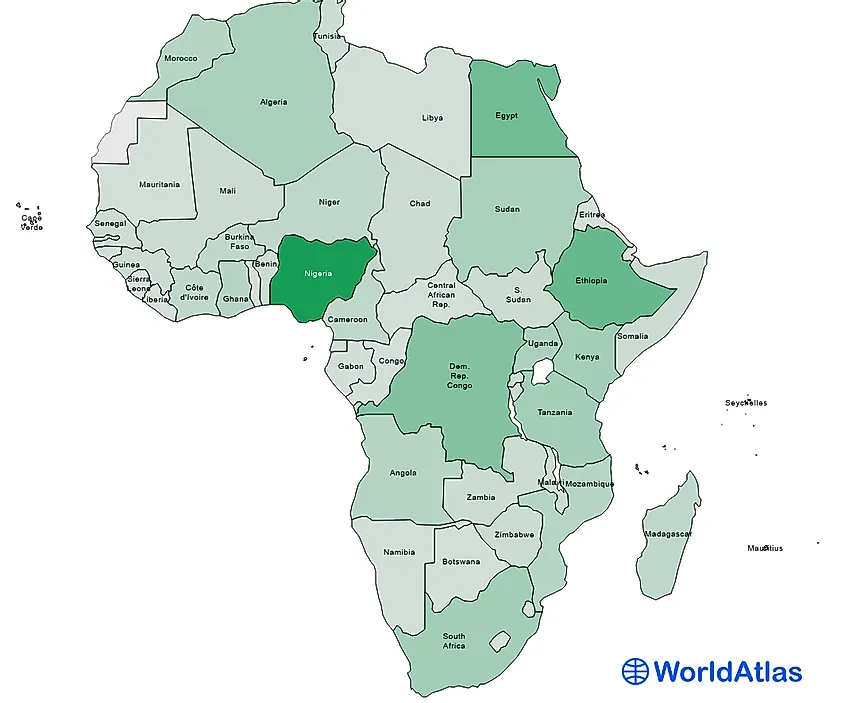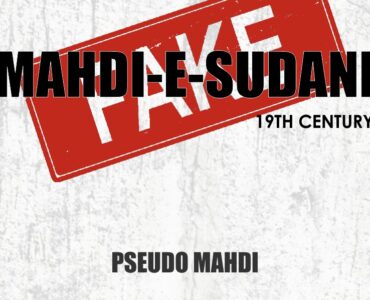
AFRICA
Muslim Population Growth In Africa

According to statistics published in the U.S. State Department’s International Religious Freedom Report, the number or percentage of Muslims by country on the continent of Africa are as follows:
Algeria: More than 99 percent of the overall population;
Angola: Estimated at 80,000 to 90,000 adherents;
Benin: 24 percent of the overall population;
Botswana: According to a 2011 study by the Pew Research Center, there are approximately 8,000 Muslims, many of whom are of South Asian origin;
Burkina Faso: Approximately 61 percent of the overall population;
Burundi: Estimated at between 2 percent to 5 percent of the overall population\;
Cameroon: 21 percent of the overall population is Muslim according to the 2005 census;
Cape Verde: 2 percent of the overall population is Muslim according to the country’s National Institute of Statistics.
Central African Republic: 10 percent of the overall population according to the 2003 census.
Chad: Approximately 58 percent of the overall population according to the 2009 census.
Comoros: More than 99 percent of the overall population.
Cote d’Ivoire: Approximately 35 percent to 40 percent of the overall population.
Democratic Republic of the Congo: 5 percent of the overall population Post0
Djibouti: 94 percent of the overall population.
Egypt: Approximately 90 percent of the overall population is Sunni Muslim while the Shi’a Muslims constitute significantly less than 1 percent of the overall population.
Equatorial Guinea: Less than 1 percent of the overall population.
Eritrea: 50 percent of the overall population according to the Eritrean government and 36 percent of the overall population according to a 2010 estimate by the Pew Charitable Trust.
Ethiopia: 34 percent of the overall population according to the 2007 census.
Gabon: 5 percent – 10 percent of the overall population.
The Gambia: M1qore than 90 percent of the overall population.
Ghana: 18 percent of the overall population.
Guinea: Approximately 85 percent of the overall population.
Guinea-Bissau: 40% of the overall population.
Kenya: 10% of the overall population.
Lesotho: estimated at 4,000 Muslim families according to the International Religious Freedom Report for 2011 according to the International Religious Freedom Report for 2013 Muslim numbers are declining due to emigration to South Africa.
Liberia: 12.2% of the overall population according to the 2008 National Population and Housing Census. Unofficial reports and surveys estimate Muslims constitute between 10 and 20 percent of the population.
Libya: 97% of the overall population.
Madagascar: 10% – 15% of the overall population.
Malawi: approximately 13% of the overall population.
Mali: 95% of the overall population.
Mauritania: almost the entire population practice Islam.
Mauritius: 17% of the overall population according to the 2000 census.
Morocco: more than 99% of the overall population.
Mozambique: 18% of the overall population according to the National Institute of Statistics 2007 census.
Namibia: small community (numbers or percentage are not mentioned).
Niger: more than 98% of the overall population.
Nigeria: estimated at 50% of the overall population.
Republic of the Congo: 2% of the overall population.
Rwanda: 4.6% of the overall population according to the 2002 census.
Sao Tome and Principe: less than 2% of the overall population.
Senegal: approximately 94% of the overall population.
Seychelles: small numbers of Muslims (there is no mention of numbers or percentage). 1.1% according to the CIA Factbook 2012.
Sierra Leone: estimated at 77% of the overall population by the Inter-Religious Council.
Somalia: a large majority of the population is Sunni Muslim (no mention of numbers or percentage).
South Africa: together with Hindus, Jews, Buddhists, and adherents of traditional African beliefs together constitute less than 5% of the overall population (no mention of numbers or percentage). 1.5% of the overall population according to the CIA Factbook 2012.
South Sudan: Studies from the 1980s and the early 2000s estimated Muslims constituted between 18 and 35 percent of the population, but the number of Muslims has probably declined through migration to Sudan after South Sudanese independence in 2011.
Sudan: approximately 97% of the overall population according to the Ministry of Culture and Information (MCI).
Swaziland: approximately 2% of the overall population.
Tanzania: roughly 35% of the overall population according to Pew Forum survey conducted in 2010, whereas according to other reports approximately 50% of the overall population.
Togo: estimated at 14% of the overall population according to a research conducted in 2004 by the Demographic Research Unit of the University of Lome.
Tunisia: 99% of the overall population.
Uganda: 12% of the overall population according to government figures.
Zambia: less than 1% of the overall population according to the 2000 census. There are approximately 140,000 Muslims. Muslim communities are primarily concentrated in Lusaka and in the Eastern and Copperbelt provinces. Many are immigrants from South Asia, Somalia, and the Middle East who have acquired Zambian citizenship. Somali immigration has increased significantly in recent years; the Somali community is estimated at around 20,000, with a majority living in Ndola and Lusaka. A small minority of indigenous persons are also Muslim.
Zimbabwe: approximately 3% of the overall population.


